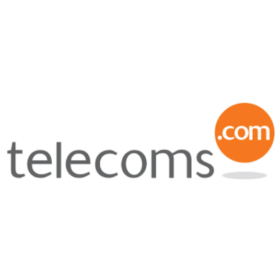Tying the Knot: 5G and Wi-Fi 6 Are Set to Become the Telco Industry’s Golden Couple
In the world of communications drama, nothing quite comes close to the long-running, “will they or won’t they” soap opera of cellular and Wi-Fi. The relationship between these two pioneering forces in connectivity has been sometimes fractious, occasionally friendly, but always inevitable. It’s difficult to think of any other couple in technology that combine fierce rivalry with co-dependence, but that’s what makes them so incredibly watchable. 67
Cellular and Wi-Fi might still be battling it out to win contracts, with both technologies offering ostensibly interchangeable solutions, but the real win for the industry will ultimately lie in their convergence. Our latest report, 7 industry-shaping trends impacting mobile operators in 2022, talks in detail about what the telco industry should expect in the coming year. The report discusses on how state-sponsored threat actors are increasingly targeting mobile operators, then it talks about hyperscalers and the bold strides they’re taking into the mobile data space. Today, we’re talking about a third trend that will impact the telco community in 2022 – Wi-Fi 6 and 5G finally tying the knot.
An unlikely partnership
In a 2021 survey of networking executives from nine countries, Deloitte Global found that nearly half of all respondents (45%) were testing or deploying Wi-Fi 6 and 5G concurrently for their advanced wireless initiatives. Virtually all (98%) said they expected their organization would be using both technologies together within three years, investing equally in both. Why?
It was once speculated that 5G might outpace and ultimately replace Wi-Fi technology altogether, making inroads into Wi-Fi’s primary profit-making domain – the enterprise. It’s a reasonable conclusion to arrive at when you consider the increasingly small radio cells and wide transmission channels that 5G has at its disposal, but Wi-Fi 6 is proof positive of Wi-Fi’s future potential and that it’s not just limited to a “best-effort” service.
For starters, Wi-Fi 6 offers superior indoor coverage. For all the justified fanfare around 5G, building penetration remains up to 100 times worse on 95% of 5G frequency bands compared with 3G and 4G, making Wi-Fi 6 a vital bridge component in the overall connectivity picture. Though some new approaches can enhance 5G’s indoor performance, Wi-Fi 6’s advantages in terms of cost, convenience, and energy consumption persist. For all the perceived commonalities between 5G and Wi-Fi 6, the fact remains that 5G is a wide area network (WAN) technology, and Wi-Fi is a wireless local area network (WLAN) technology. The market knows this, and is keen to play each technology to its strengths – what better reason for the Wi-Fi and cellular camps to lay down their arms and play nice?
It’s all in the vows
Of course, for these two traditionally competitive technologies to co-exist productively, integration standards are key. Important work is already underway to bring 3GPP and other industry standards into a common framework that operators can use to make the best of both technologies. This effort is being led by the Wireless Broadband Alliance, of which Enea is now a proud member since its acquisition of Aptilo Networks. Operators and manufacturers as varied as Broadcom, BT, Cisco, Google, Intel, Orange, Nokia and countless others are part of this alliance, working hard to evaluate the optimization potential in converging 5G and Wi-Fi architecture.
This alliance of industry leaders is asking crucial questions, such as what are the real-world business use cases of allowing subscribers to roam between Wi-Fi and 5G within – and across – private networks? How can enterprise Wi-Fi segmentation and 5G slicing come together to make this possible in private network deployments? And what kind of policy controls need to be in place to facilitate this level of interoperability? This work on what the Alliance calls “RAN convergence” between Wi-Fi and 5G is already making co-deployments easier.
So, far from being two competing technologies at loggerheads, it seems the old rivals may be about to tie the knot for the common good. In the coming year, we’re likely to see talk of convergence between Wi-Fi and cellular technologies increase, and more use-cases emerge as the market realizes, once and for all, they’re stronger together as supplementary forces than they are apart.
Download this year’s report: 7 Trends That Will Shape the Mobile Industry In 2022





